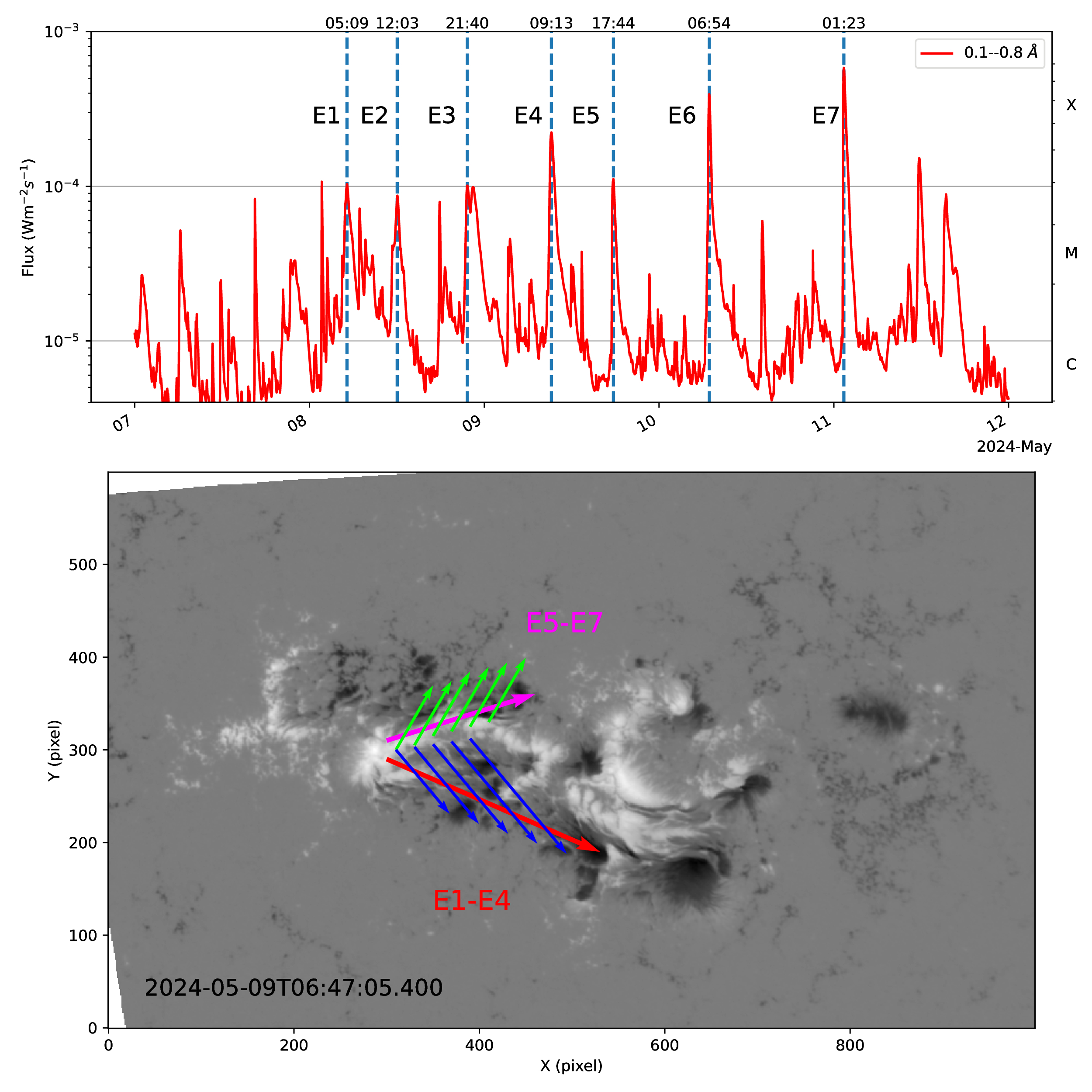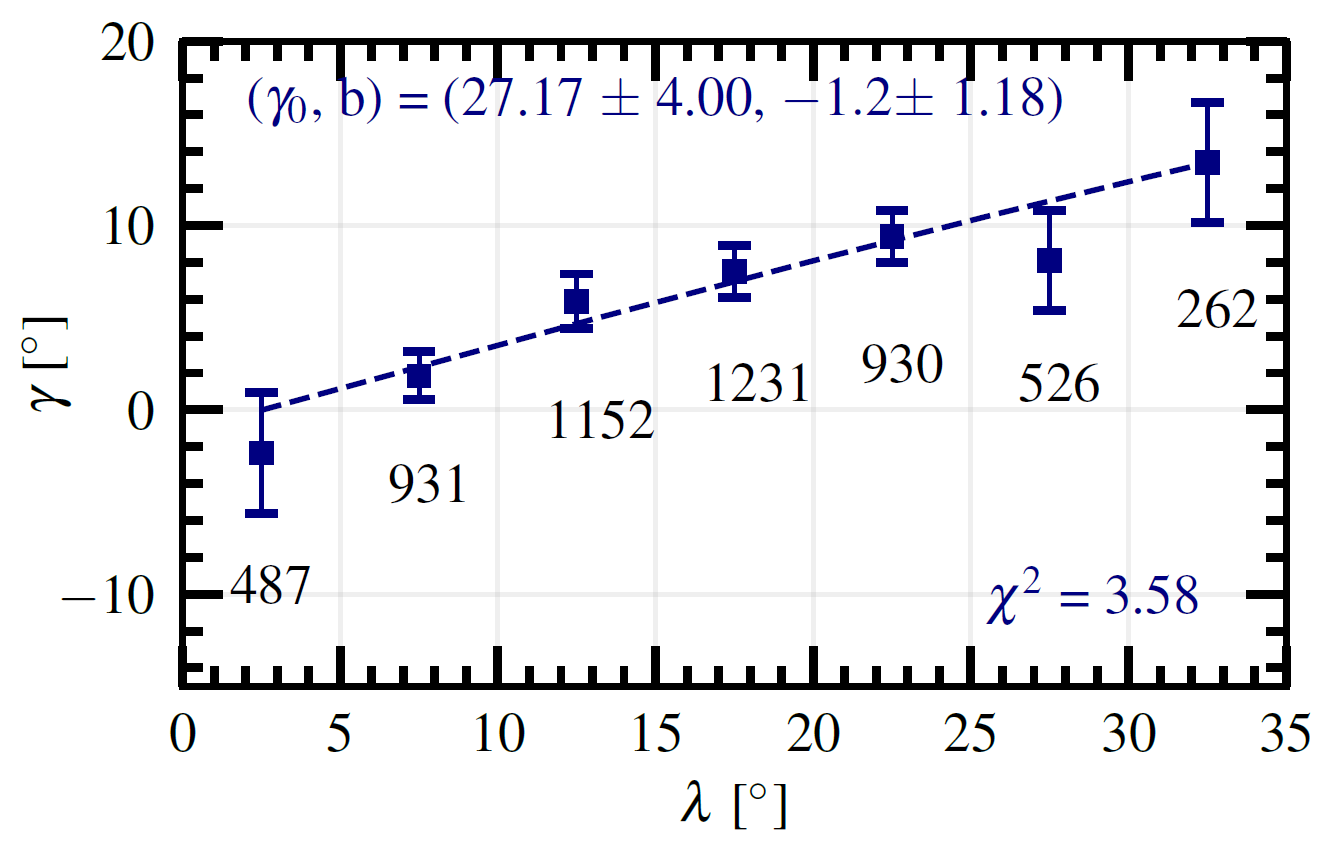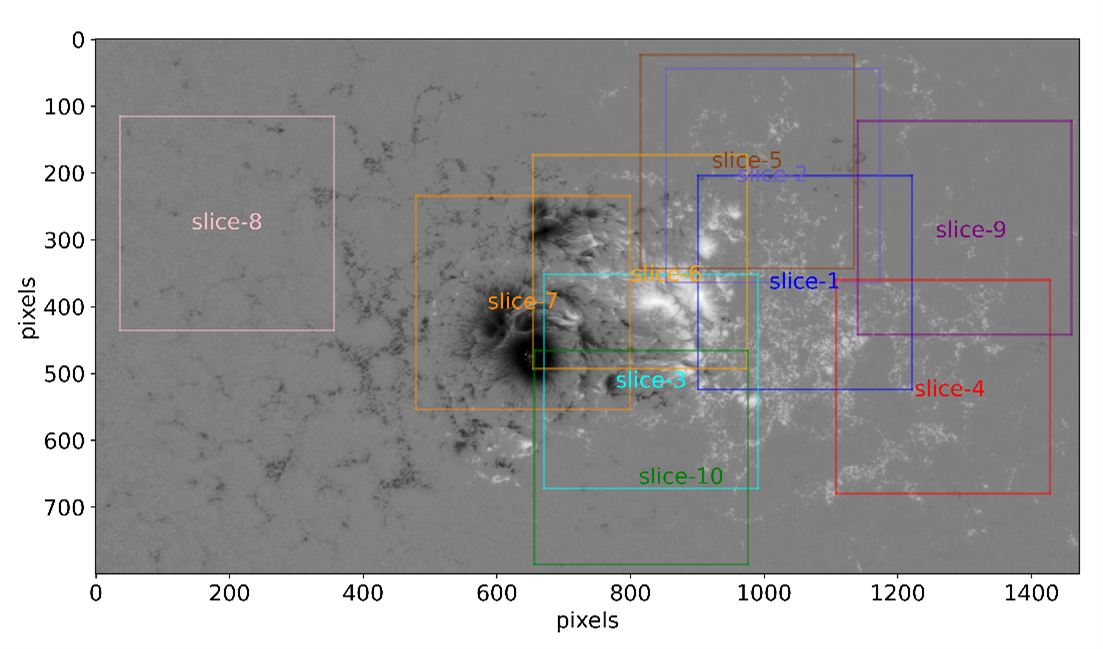Tag Archives: active regions
208. Unveiling Key Factors in Solar Eruptions Leading to the Solar Superstorm in May 2024
207. Simulating the formation and eruption of magnetic flux ropes in the solar atmosphere
206. Magnetic power spectra of the Sun and cycle dependence of magnetic network
201. Study of Bipolar Magnetic Regions using AutoTAB: Support of Thin Flux Tube Model?
195. Cross-Referenced NOAA Active Region List for Multi-Rotation Active Regions, 2011-2019 Now Available
194. Rossby waves and the organization of photospheric magnetic fields
HMI magnetic field synoptic maps are used to evaluate the magnetic field structures’ organization and propagation as a function of time and latitude. It is demonstrated that the organization of longitudinal structures observed on synoptic maps is proportional to the level of activity at given latitudes.
192. Magnetic helicity and free magnetic energy as tools for probing eruptions in two differently evolving solar active regions
An analysis of two active regions shows that differently evolving ARs may produce major eruptive flares even when, in addition to the accumulation of significant free magnetic energy budgets, they accumulate large amounts of both left- and right-handed helicity without a strong dominance of one handedness over the other.










